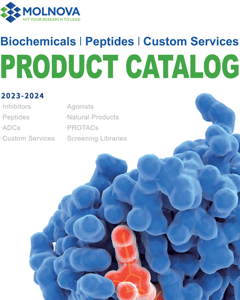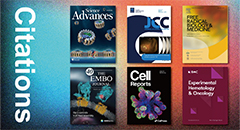 Home -
Products -
Others -
Other Targets -
2-({[2-(4-ethoxy-3-methoxyphenyl)-1,3-thiazol-4-yl]methyl}sulfanyl)pyrimidine-4,6-diamine
Home -
Products -
Others -
Other Targets -
2-({[2-(4-ethoxy-3-methoxyphenyl)-1,3-thiazol-4-yl]methyl}sulfanyl)pyrimidine-4,6-diamine

2-({[2-(4-ethoxy-3-methoxyphenyl)-1,3-thiazol-4-yl]methyl}sulfanyl)pyrimidine-4,6-diamine
CAS No. 1209784-87-1
2-({[2-(4-ethoxy-3-methoxyphenyl)-1,3-thiazol-4-yl]methyl}sulfanyl)pyrimidine-4,6-diamine( —— )
Catalog No. M28440 CAS No. 1209784-87-1
2-({[2-(4-ethoxy-3-methoxyphenyl)-1,3-thiazol-4-yl]methyl}sulfanyl)pyrimidine-4,6-diamine is a chemical compound.
Purity : >98% (HPLC)
 COA
COA
 Datasheet
Datasheet
 HNMR
HNMR
 HPLC
HPLC
 MSDS
MSDS
 Handing Instructions
Handing Instructions
| Size | Price / USD | Stock | Quantity |
| 2MG | 178 | Get Quote |


|
| 5MG | 282 | Get Quote |


|
| 10MG | 422 | Get Quote |


|
| 25MG | 691 | Get Quote |


|
| 50MG | 972 | Get Quote |


|
| 100MG | 1305 | Get Quote |


|
| 500MG | 2601 | Get Quote |


|
| 1G | Get Quote | Get Quote |


|
Biological Information
-
Product Name2-({[2-(4-ethoxy-3-methoxyphenyl)-1,3-thiazol-4-yl]methyl}sulfanyl)pyrimidine-4,6-diamine
-
NoteResearch use only, not for human use.
-
Brief Description2-({[2-(4-ethoxy-3-methoxyphenyl)-1,3-thiazol-4-yl]methyl}sulfanyl)pyrimidine-4,6-diamine is a chemical compound.
-
Description2-({[2-(4-ethoxy-3-methoxyphenyl)-1,3-thiazol-4-yl]methyl}sulfanyl)pyrimidine-4,6-diamine is a chemical compound.
-
In Vitro——
-
In Vivo——
-
Synonyms——
-
PathwayOthers
-
TargetOther Targets
-
RecptorGlutamate receptor|NMDA receptor
-
Research Area——
-
Indication——
Chemical Information
-
CAS Number1209784-87-1
-
Formula Weight389.49
-
Molecular FormulaC17H19N5O2S2
-
Purity>98% (HPLC)
-
Solubility——
-
SMILESCCOc1ccc(cc1OC)-c1nc(CSc2nc(N)cc(N)n2)cs1
-
Chemical Name——
Shipping & Storage Information
-
Storage(-20℃)
-
ShippingWith Ice Pack
-
Stability≥ 2 years
Reference
molnova catalog



related products
-
4(15),5,10(14)-Germa...
4(15),5,10(14)-Germacratrien-1-ol is a natural product for research related to life sciences.
-
Kemptide
Kemptide is a synthetic heptapeptide, acting as a substrate for cAMP-dependent protein kinase (PK).
-
Ceapin-A7
Ceapin-A7 is a selective blocker of ATF6α signaling in response to ER stress, with an IC50 of 0.59 μM. Ceapin-A7 can be used to explore both the mechanism of activation of ATF6α and its role in pathological settings.



 Cart
Cart
 sales@molnova.com
sales@molnova.com

